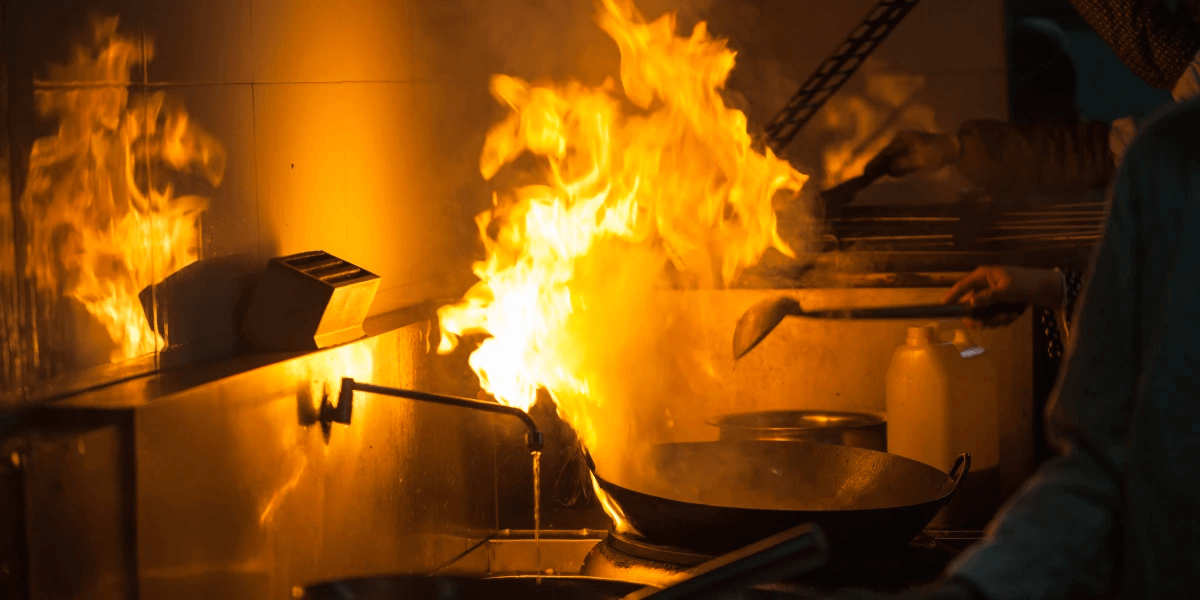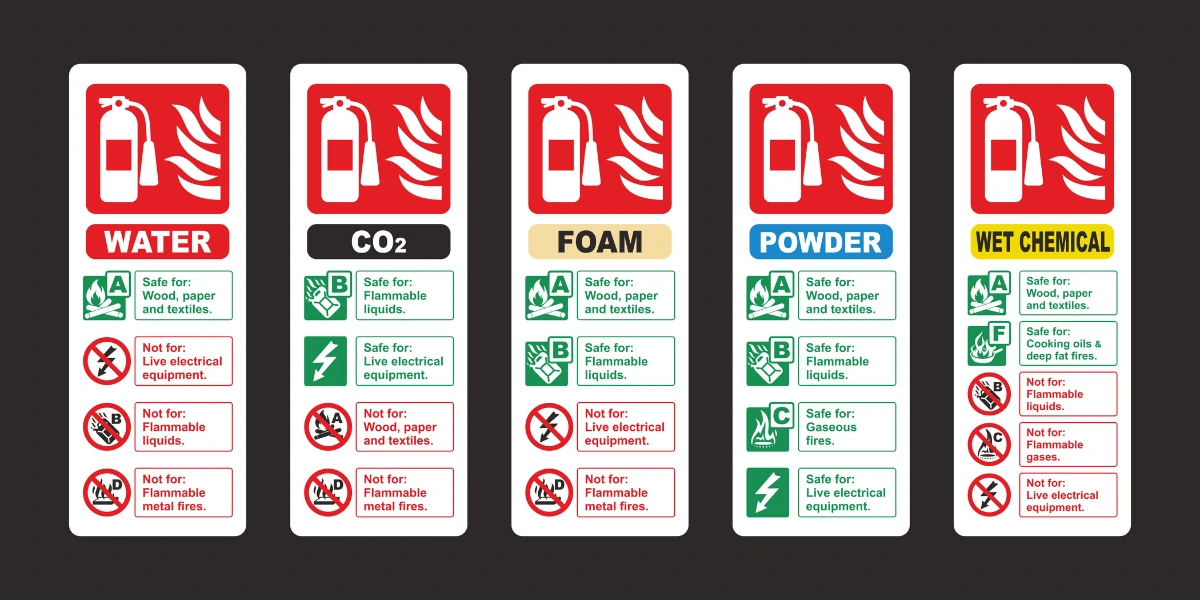The Different Classifications of Fire | State College, PA
Fire isn't just fire. The stuff that's burning makes a big difference in how you should tackle it. This is why it's important to know the different classifications of fire. There are many ways of smothering a flame, but you have to know the specific kind of flame you are trying to fight.
From your everyday paper and wood fires to those tricky electrical or gas fires, each type has its own playbook for being shown the door.
Why does it matter? Because using water on a grease fire in your kitchen can turn a small flare-up into a fireball. Just like you wouldn't throw water on an electrical fire unless you're looking for trouble.
Knowing your fire types is key to keeping things safe. Let's study all the fire classifications, and hopefully, knowing more can help make you prepared for any type of fire emergency.
Key Takeaways
- Understanding the different classifications of fire is crucial for selecting the appropriate extinguisher and effectively mitigating fire risks.
- The right type of fire extinguisher can mean the difference between a quick resolution and a hazardous escalation.
- Consulting a professional fire safety company ensures you receive expert guidance and the proper equipment to protect against all classes of fire tailored to your specific needs.
The Six Main Classes of Fire

Different fires require different strategies and tools for extinguishing them safely and effectively. Here’s a closer look at the six main classes of fire you might encounter:
Class A fires (Solids)
These are the fires you’re probably most familiar with. They involve organic solids like paper, wood, cloth, and certain plastics. The key to putting these out? Water and foam extinguishers are your go-to options. They cool the burning materials and smother the flames to prevent re-ignition.
Class B fires (Liquids)
Flammable liquids such as alcohol, gasoline, and grease lead to Class B fires. Water won't help here, as a Class B fire can spread the flammable liquid, making things worse.
Foam and powder extinguishers are the heroes, as they can blanket the fire, cutting off the oxygen and stopping the fire in its tracks.
Class C fires (Gases)
Got a fire involving flammable gases like propane or natural gas? It's termed a Class C fire. This is where you need to be careful. First, if possible, shut off the gas supply to stop fueling the fire. Then, use a powder extinguisher to tackle the flames.
Remember, cutting off the fuel source is crucial here.
Class D fires (Metals)
Metals burning? Yes, it happens. Combustible metals such as magnesium, sodium, and others require a very specific approach. Standard extinguishers won't work and can be dangerous. Specialized powder extinguishers designed for metal fires are necessary to smother these high-temperature flames.
Electrical fires
Technically, electrical fires don’t belong to a class of their own because it's usually the materials ignited by the electrical current that burn. However, they're unique because using water is a big no-no due to the risk of electrical shock. CO2 extinguishers are ideal here because they can put out the fire without conducting electricity.
Class K fires (Cooking fats & oils)
Common in kitchens, a Class K fire (also called Class F at times) involving cooking oils and fats requires a specific type of extinguisher. Wet chemical extinguishers are designed to combat these fires by creating a soap-like solution that cools and smothers the flames, preventing re-ignition.
Types of Fire Extinguishers

Let's take a deeper look at the tools of the trade when it comes to fighting fires: the extinguishers. Knowing which extinguisher to use can mean the difference between dousing a fire effectively and causing more damage.
Water and foam extinguishers
These are the MVPs for Class A fires. Imagine you've got a fire fueled by paper, wood, or textiles—water and foam extinguishers are your best bet. The water cools the burning material while the foam smothers the fire, cutting off the oxygen supply.
But remember, water conducts electricity, so steer clear of using these on electrical fires to avoid the risk of electric shock.
Powder extinguishers
Powder extinguishers are versatile firefighters. They're suitable for Class A, B, and C fires, making them a great choice for spaces with a variety of fire risks. They can also be used on electrical fires, thanks to their non-conductive properties.
However, if we're talking about Class D metal fires, you'll need a specific type of dry powder designed for those combustible metals.
CO2 extinguishers
These are perfect for Class B fires (think flammable liquids like gasoline or paint) and electrical fires. CO2 extinguishers work by displacing oxygen, effectively suffocating the fire. Plus, they leave behind no residue, which is a big plus for electrical equipment or machinery that you don't want to damage.
Wet chemical extinguishers
Specifically engineered for Class K fires, those tricky kitchen fires involving cooking oil and fat. Wet chemical extinguishers work by creating a soap-like solution that not only cools the burning oil but also forms a barrier between the oil and the air, preventing re-ignition.
They're a must-have in commercial kitchens but are also increasingly common in home kitchens with deep-fat fryers.
Choosing the Right Extinguisher for Your Needs
Choosing the right fire extinguisher is making an informed decision based on the specific risks in your environment. Whether you're at home, in the office, or running a commercial kitchen, the right extinguisher can be the difference between a minor incident and a major catastrophe.
Check your location
First off, take a look around your space. What's at risk of catching fire?
If you're in a kitchen, you're looking at potential Class K fires from cooking oils and fats. An office filled with computers and electronic equipment? That's a prime candidate for electrical fires. Workshops or industrial settings might have you wary of Class B flammable liquid fires or even Class D metal fires if you're working with reactive metals.
Understanding the types of materials and equipment in your environment helps pinpoint the fire classes you're most likely to encounter. The aim isn't to become a firefighter but to equip yourself with the tools to prevent a small fire from becoming a disaster.
Consult with professionals
Consulting with fire safety experts is also recommended. Professionals can assess your space, identify potential fire risks, and recommend the best type and placement of extinguishers for your needs.
They can also guide you on the number of extinguishers required to meet legal and safety standards, especially in commercial or public buildings.
Don't Just React, Be Proactive with Swartz
We're Swartz Fire & Safety, and we're professionals at keeping people and properties safe from the threat of fire. We believe in empowering you to take proactive steps toward fire safety by creating an environment where the risk of fire is minimized.
Our team of experts is ready to guide you through selecting the perfect fire extinguisher for your needs so that you're prepared for most fires you might encounter.
We provide a full spectrum of services to ensure your peace of mind, ranging from comprehensive fire safety assessments to hands-on training with the latest extinguishers.
Let us help you turn fire safety from a concern into confidence. Reach out to us today and take the first step towards a safer tomorrow!
Frequently Asked Questions
What are the 5 classifications of fire?
The five main classifications of fire are:
- Class A: Fires involving solid materials such as wood, paper, or textiles.
- Class B: Fires involving flammable liquids like petrol, diesel, or oils.
- Class C: Fires involving gases.
- Class D: Fires involving metals, such as magnesium or lithium.
- Class K: Fires involving cooking oils and fats, like in deep-fat fryers.
What are the 4 classifications of fire and its extinguishment?
The four main classifications of fire and their preferred extinguishment methods are:
- Class A: Extinguished with water or foam to cool the material.
- Class B: Extinguished with foam or dry powder to smother flames.
- Class C: Extinguished primarily by shutting off the gas supply; then, a dry powder extinguisher can be used.
- Class D: Extinguished with special dry powder extinguishers designed for metal fires.
How is fire classified?
Fire is classified based on the fuel source involved, which determines the best extinguishing method. The classification helps in choosing the right fire extinguisher and tactics to use for effective and safe extinguishment.
What are the 6 fire types?
The six types of fire include:
- Class A: Solids like wood and paper.
- Class B: Flammable liquids.
- Class C: Gases.
- Class D: Metals.
- Electrical: Fires involving electrical equipment (not officially a class but require specific extinguishing methods).
Class K (or Class F): Cooking oils and fats.


